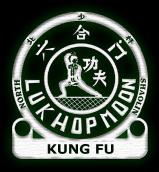
HISTORY


|
HISTORY |

|
Many sources report that the origin of xingyiquan (liuhe or luk hop is just one of the basic aspects in the training of xingyi) can be traced back to Sung dynasty national hero: marshal Yue Fei. However, one should bear in mind that his knowledge of martial arts all originated from the Shaolin temple via his teacher Zhou Tong. It is also in this sense that the liuhe principle is related to Shaolin. The main principles for liuhe can be summarized as follows:
As a matter of fact, the above holds not only for liuhe but is valid for a great many martial arts styles in particular and many sports in general.a good notion/discrimination of the six main directions in a three-dimensional plane, i.e. left, right, backwards, forwards, up, and down; co-ordinated movements between hands and the observations from the eyes, legs and torso, and a balance between strength and intend.
In addition, one ought to move like a swimming/flying dragon, rock steady, calm and fearless like a tiger, as quick as a dodging hare, adroit and inventive like a monkey, and light and elegant as a crane taking off or landing.
On the other hand, factual evidence only trace back to the claim that Ji Ji Ke learned xingyiquan from a treatise he obtained from a high monk in a temple with the transcript about its fundamentals. The title of this manuscript was: Yue Fei's Liuhe Xinyi boxing manual.
In both cases, one clearly notices the interplay between xingyi and liuhe. Considering the roots of the martial arts of great-grandmaster Lauone has to conclude that liuhe is most likely used as an alias for xingyi.The forms of the xingyiquan techniques are short and single. There are only five fists and twelve forms. It does not appear to be difficult to practice. But it is not very easy to attain the complete skill. The reason for this relative simplicity is that Yue Fei likely developed it for the soldiers of his army. They had to obtain on relative short notice a good fighting skill. Attaining a complete skill was not the key issue, while survival of his soldiers was.
GENEOLOGY(1) Yue Fei ------- (2) Ji Jike ------- (3) Cao Jiwu ------- (4) Ma Xueli|--(4) Dai Longbang --------- (5) Li Feiyu
a.k.a. Nengran(5) Li Feiyu -----(6) Li Guangting
|--------(6) Li Jingzhai
|-------(6) Zhang Shude
|-------(6) Liu Xiaolan
|-------(6) Guo Yunshen-------(7) Xu Zhanao
| |-------(7) Li Kuiyuan--------(8) Sun Lutang
|-------(6) Liu Yuanheng
|-------(6) He Yongnian
|-------(6) Song Shide
|-------(6) Song Shirong-------(7) Song Tielin
| |------(7) Jia Yungao
|-------(6) Che Yonghui-------(7) Bo Xubao
| |------(7) Li Fuzhen
|-------(6) Bai Siyuan
|-------(6) Liu Jilan
(6) Liu Jilan -------- (7) Geng Jishan ----------(8) Zhao Zhenyao
| |---(8) Zhang Dianhua
| |---(8) Deng Zhifeng
| |---(8) Liu Caizhen (Lau Tsoi San) ------ (9) Qingchuan (Caizhen's son)
| | |---(9) Huang Shunting (Wong Seung Ting)
| | |----(9) Yin Ruchuan [Shiceng]
|---------(7) Liu Dekuan -----
|---------(7) Zhang Zhaokui------(8) Han Muxia
|---------(7) Wang Fuyuan-------(8) Mu Xiuyi
| |------------(8) Wang Jiwu
| |------------(8) Peng Yingxi
|---------(7) Liu Dianchen -------(8) Zhang Xiangzhai
|---------(7) Zhou Mingtai -------(8) Yuan Weibin
|---------(7) Li Cunyi -----------(8) Shang Yunxiang-------(9) Zhao Shuhao
|------(9) Li Zhankui
|------(9) Liu Huapu
|------(9) Xu Xiaoyu-(10) Gai Tien
| |---(10) Bao Yuzhao
| |---(10) Yi Binghun
|------(9) Chen Zijiang(9) Huang Shunting ------------- (10) Xie Xishao
|------------------(10) Zhang Bingxin
|- ----------------(10) Cheng Jixiang
|------------------(10) Liang Weijia
|------------------(10) Huang Shaoping
|------------------(10) Wang Suikui
|------------------(10) Deng Jixiang (Tang Kut Cheung)
|------------------(10) Liao Yuhua
|------------------(10) Tan Shulun

References
Draeger D.F., Smith R.W., 1980, Asian Fighting Arts (High View Publications), ISBN 0-87011-436-0
Du X., 1994, Wu Hun Magazine, (translated by Joseph Crandall) [local version]
Guang X., Records of Selected Dialogues between Dong Haichuan, (translation by Joseph Crandall) [local version]
Liang S.-Y., Yang J.-M., 1990, Hsing Yi Chuan - theory and application -, (YMAA Publication Center), ISBN 0-940871-08-4
Liang S.-Y., Yang J.-M., Wu W.-C., 1994, Emei Baguazhang, (YMAA Publication Center), ISBN 0-940871-30-0
Liu Y.D., The Origin of Eight-Diagram Palm [local version]
Miller D., Cartmell T., 1994, Xing Yi Nei Gong, ISBN 1-88175-04-6
Wong S.T., 1983, transmission of Xingyiquan [capita selecta]
Wong S.T., 1983, unpublished memoires